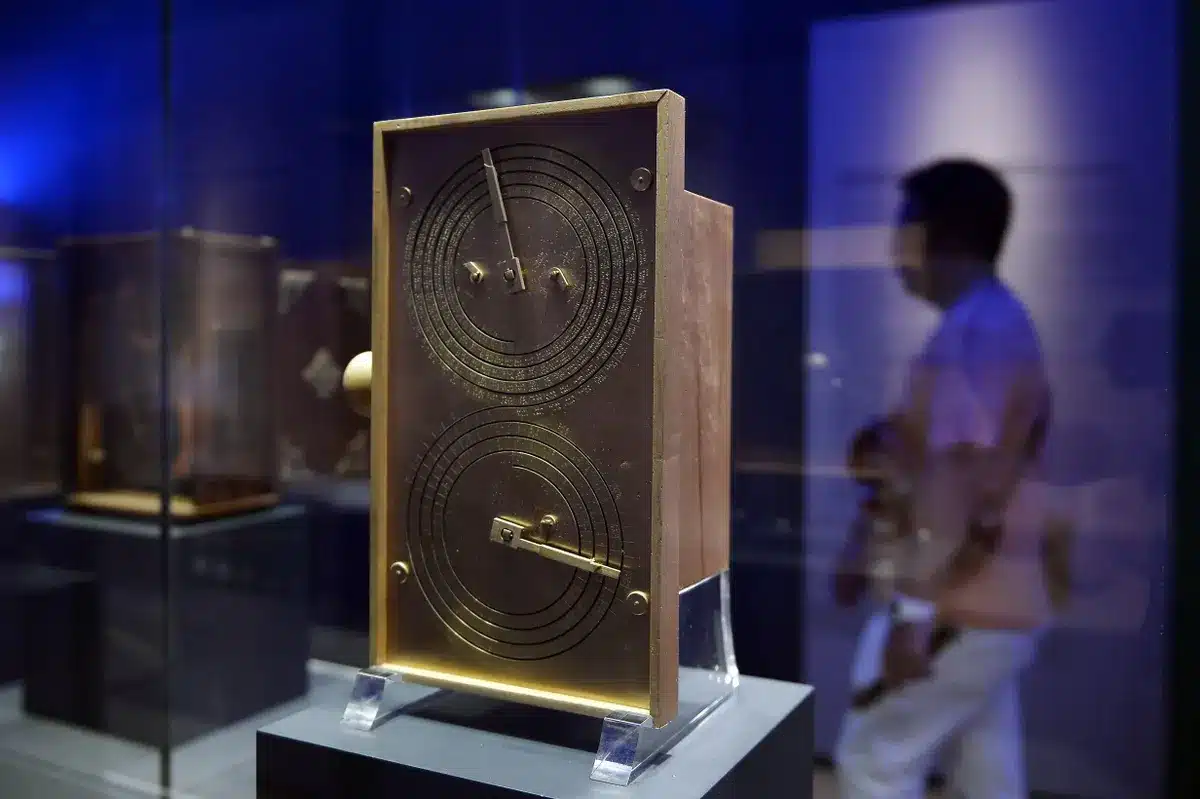In the realm of captivating mysteries, one tale stands out among the rest. It takes us back to 60 BC when a Roman ship embarked on a voyage, shrouded in secrecy regarding its origin and destination. Tragically, amidst the tumultuous waters between Greece and Crete, the vessel succumbed to a tempest, sinking beneath the waves. For over two millennia, its treasures remained lost to the annals of history, entombed in the sandy ocean floor. However, the true saga of this captivating story began a century ago when sponge divers made a startling discovery off the coast of Antikythera, an island in the Aegean Sea, at a depth of 75 meters.
Amongst the relics they salvaged was an eerie hand protruding from the silt, part of an ancient statue. Despite the time-worn ravages of the sea, the divers retrieved a treasure trove of artifacts — bronze and marble statues, jewelry, glassware, and coins. Each item showcased exquisite craftsmanship, yet few were intact, sparking endless speculation about the ship’s purpose. Was it a vessel delivering treasures to a regal sovereign or a spoils-laden plunder ship from war? Or perhaps it carried an assortment of discarded trinkets destined for distant markets?
However, one particular find stood out: a seemingly corroded assemblage of bronze gears and wheels. Despite its unassuming appearance, experts soon realized they were gazing upon an ancient marvel, an unparalleled feat of engineering from a bygone era. This extraordinary device, unlike anything seen before, emerged as the world’s first computer—an analog mechanism designed for calculations. Its true purpose came to light as scientists painstakingly examined it: a remarkable timepiece and an astronomical calculator. This hand-cranked wonder was utilized to predict the movements of stars and planets, facilitating prophecies, religious ceremonies, and even determining the city slated to host the Olympic Games.
Consider the context: we delve into the year 60 BC, an era preceding the emergence of similar complexities by many centuries. The skills and intricacy required to construct such a device would not resurface until the 14th century. Its existence, therefore, surpasses the boundaries of time, embodying a creation far ahead of its era. While scientists have made remarkable strides in understanding this ancient mechanism, they remain acutely aware that they possess only half of the story. The missing pieces of this enigma are believed to lie dormant beneath the Aegean Sea, yet to be unearthed. The incomplete alignment of gears and cogs points to an undiscovered realm of further intricacies, waiting to be unraveled.
With each passing day, researchers unveil new insights into the Antikythera mechanism, now renowned for its complexity. Bronze components bear intriguing inscriptions, with one word standing out—Cosmos, the Greek term for the universe. Another metal plate is suspected to house an instruction manual, guiding users through various gear configurations.
Ironically, cutting-edge technology has now arisen from modern times, aimed at unraveling the mysteries that lie beneath the waves. A $1.7 million diving suit, a wearable submarine of sorts, has been developed expressly for archaeologists to explore the depths of the wreck site. Propelled by thrusters and equipped with mechanical pincers, this advanced suit empowers the wearer to traverse underwater realms with unparalleled freedom. Breathing and communication systems, along with a carbon dioxide scrubber, enable extended stays at depth.
The expedition to uncover the secrets of the Antikythera mechanism demands considerable resources, with a total cost of $3 million, partly sponsored by a Swiss watchmaker—a testament to their









